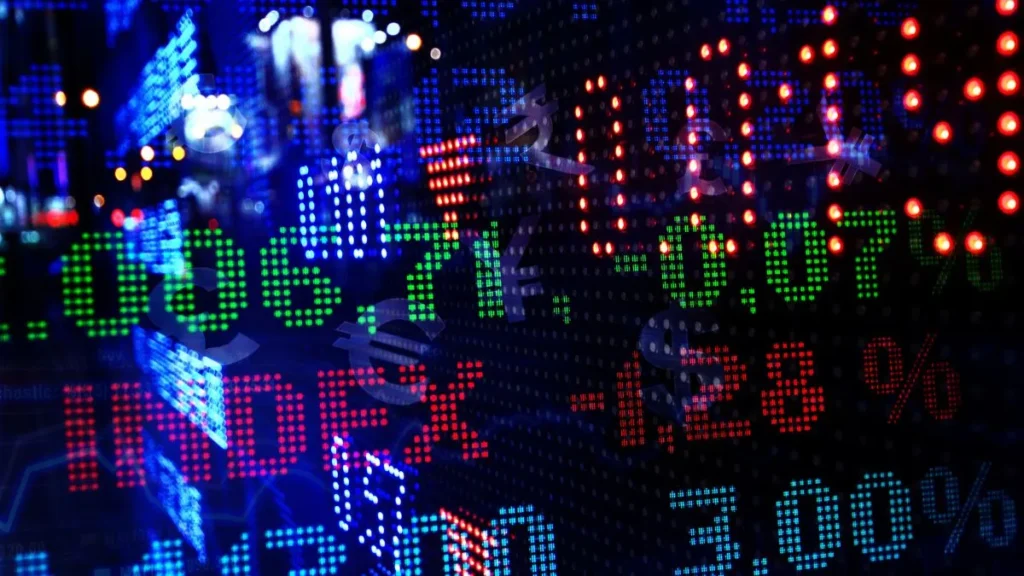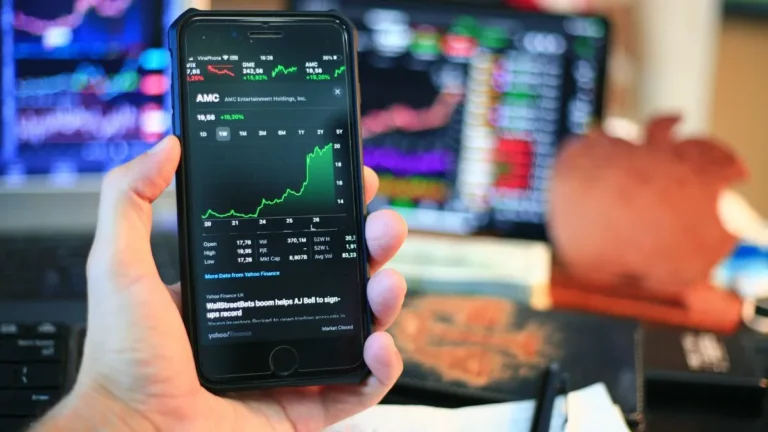Emotionless Options Trading: The Robot-Like Approach to Market Success
In the high-stakes world of options trading, emotions can be your worst enemy. Successful traders understand that maintaining a detached, systematic approach is the key to consistent profits. Think of trading like a sophisticated computer algorithm – calculated, precise, and free from the turbulent waves of human sentiment.
Imagine transforming your trading strategy into a mechanical process that eliminates psychological pitfalls. The robot-like approach isn’t about removing human intelligence, but about disciplining your decision-making framework.
The Psychology of Emotionless Trading
Most traders lose money because they let fear, greed, and impulse drive their actions. By adopting a robot-like methodology, you strip away these destructive emotional responses. This means:
- Establishing strict entry and exit rules
- Using predefined risk management protocols
- Following systematic trading algorithms
- Removing subjective interpretations from market analysis
Developing a Mechanical Trading System
Creating a robot-like trading approach requires developing a robust system with clear, unemotional parameters. Your strategy should include:
- Precise technical indicators for entry signals
- Predetermined stop-loss and take-profit levels
- Consistent position sizing rules
- Quantitative screening methods for potential trades
Risk Management: The Core of Emotionless Trading
Successful robot-like traders prioritize risk management above everything else. This means never risking more than a small percentage of your total trading capital on any single trade. Typically, professional traders recommend risking no more than 1-2% per trade.
Key Risk Management Principles
Implementing a mechanical risk management approach involves:
- Using fixed percentage position sizing
- Setting automatic stop-loss orders
- Avoiding emotional averaging down or revenge trading
- Maintaining a consistent trading journal
Technology and Tools for Robotic Trading
Modern trading platforms offer advanced tools that can help you trade like a robot. Algorithmic trading software, backtesting platforms, and advanced charting tools enable traders to create and execute systematic strategies with minimal emotional interference.
Recommended Trading Technologies
| Tool | Purpose |
|---|---|
| MetaTrader | Advanced charting and algorithmic trading |
| TradingView | Professional-grade technical analysis |
| Interactive Brokers | Sophisticated options trading platform |
Developing Your Robotic Mindset
Trading like a robot isn’t about eliminating human intelligence – it’s about channeling your intelligence into a structured, disciplined approach. This requires continuous learning, rigorous self-assessment, and the ability to adapt your strategy based on empirical data rather than emotional reactions.
Practice meditation, maintain detailed trading logs, and continually analyze your performance metrics. Treat your trading as a scientific experiment, where each trade provides valuable data for refining your approach.
Performance Tracking
Successful robot-like traders obsessively track their performance. Use spreadsheets to record every trade, including entry and exit points, reasons for the trade, and the outcome. This data becomes your roadmap for continuous improvement.
Remember, becoming a robot-like trader is a journey of discipline, continuous learning, and mechanical precision. By removing emotional interference and implementing systematic strategies, you position yourself for consistent, long-term success in the complex world of options trading.

Psychology of Detached Investment Strategies
Successful investors understand that emotional detachment is the cornerstone of rational financial decision-making. When markets fluctuate and panic sets in, maintaining a robotic approach becomes your most powerful investment strategy.
Psychological barriers often prevent traders from achieving optimal performance. Emotions like fear, greed, and anxiety can cloud judgment and lead to impulsive investment choices. By developing a systematic, emotionless framework, you transform your trading approach from reactive to proactive.
Mastering Emotional Neutrality
Professional investors treat financial markets like mathematical equations. They view stocks, bonds, and derivatives as data points rather than emotional triggers. This detached perspective allows for more objective analysis and reduces the likelihood of making decisions based on momentary market sentiments.
Key Principles of Detached Investment
- Establish predefined entry and exit points
- Create algorithmic trading rules
- Remove personal attachment to investments
- Implement strict risk management protocols
Developing a disciplined mindset requires consistent practice and self-awareness. Successful traders cultivate emotional intelligence by recognizing psychological patterns that might compromise their investment strategy.
Quantitative Decision-Making Frameworks
Data-driven investment approaches eliminate subjective interpretations. By relying on statistical models and mathematical algorithms, investors can make more precise and calculated decisions. These models analyze historical performance, market trends, and potential risk factors without emotional interference.
Analytical Strategy Components
- Comprehensive market research
- Statistical probability assessments
- Risk-reward ratio calculations
- Systematic portfolio rebalancing
Advanced investors utilize sophisticated tools and technologies that help simulate market scenarios and predict potential outcomes. Machine learning algorithms can process vast amounts of financial data, identifying patterns humans might overlook.
Psychological Training Techniques
Transforming your mental approach requires deliberate practice. Meditation, mindfulness techniques, and cognitive behavioral strategies can help investors develop emotional resilience. By training your mind to remain calm during market volatility, you create a competitive advantage.
Mental Conditioning Strategies
- Regular meditation practice
- Journaling investment decisions
- Continuous learning and skill development
- Stress management techniques
Professional traders understand that emotional control is a skill that can be developed and refined over time. By treating investment strategies as systematic processes, you minimize potential psychological pitfalls.
Technology-Driven Investment Approaches
Modern investment platforms offer advanced tools that support emotionless trading. Automated trading systems, algorithmic platforms, and AI-powered analysis provide objective insights without human emotional biases.
Implementing these technological solutions allows investors to execute trades based on predefined parameters, reducing the impact of real-time emotional reactions. By programming specific criteria for buying and selling, you create a reliable, consistent investment methodology.
Technological Investment Tools
- Algorithmic trading platforms
- Machine learning investment models
- Automated portfolio management systems
- Real-time risk assessment technologies
Ultimately, becoming an emotionless investor is about developing a disciplined, systematic approach that prioritizes rational decision-making over momentary impulses. By integrating psychological training, technological tools, and data-driven strategies, you can transform your investment journey.
Technical Analysis Over Emotional Decision-Making
Mastering the art of trading requires a strategic approach that transcends emotional impulses. Successful investors understand that emotions can cloud judgment and lead to costly mistakes in financial markets. By adopting a systematic, analytical method, traders can dramatically improve their decision-making process and overall investment performance.
The Psychology of Trading Decisions
Most investors fall victim to psychological traps that compromise their trading strategy. Fear, greed, and panic can trigger irrational choices that deviate from sound financial principles. The human brain is wired to react emotionally, but financial markets demand precision and calculated reasoning.
Key Psychological Barriers
- Confirmation bias
- Loss aversion
- Overconfidence
- Herd mentality
Implementing Systematic Trading Strategies
Professional traders develop robust systems that remove emotional interference. These strategies rely on:
- Predefined entry and exit rules
- Objective data analysis
- Risk management protocols
- Consistent performance metrics
Technical analysis becomes the cornerstone of emotionless trading. By focusing on: – Price patterns – Historical data – Statistical indicators – Mathematical models Investors can create a framework that eliminates subjective decision-making.
Risk Management Principles
Successful trading requires disciplined risk control. Implementing strict position sizing and stop-loss strategies prevents catastrophic losses. Traders must: – Never risk more than 1-2% of total capital on a single trade – Use automated stop-loss mechanisms – Diversify investment portfolios – Maintain emotional detachment from individual trades
Performance Tracking Methodology
| Metric | Measurement | Ideal Range |
|---|---|---|
| Win Rate | Percentage of Successful Trades | 50-70% |
| Risk-Reward Ratio | Potential Gain vs Potential Loss | 2:1 or Higher |
| Maximum Drawdown | Largest Portfolio Decline | Less than 20% |
Technology-Driven Trading Approach
Modern trading platforms offer sophisticated tools that support emotionless decision-making. Algorithmic trading systems can: – Execute trades automatically – Analyze market conditions instantaneously – Remove human emotional interference – Maintain consistent strategy implementation
Essential Trading Technologies
– Machine learning algorithms – Real-time data analytics – Automated trading platforms – Advanced charting software Developing a robotic trading mindset requires continuous learning and adaptation. Successful traders invest time in: – Studying market dynamics – Refining analytical skills – Understanding technological tools – Practicing disciplined execution The ultimate goal is transforming emotional reactions into calculated, data-driven decisions. By treating trading as a systematic process rather than an emotional experience, investors can significantly enhance their financial performance. Professional traders recognize that emotional detachment is not about suppressing feelings but strategically managing them. The most successful investors approach markets with mathematical precision, treating each trade as a probabilistic opportunity rather than an personal victory or defeat.
Risk Management Techniques for Systematic Traders
Systematic trading demands a rigorous approach to managing financial risks, transforming raw market data into calculated investment decisions. Successful traders understand that emotional detachment and strategic planning are crucial components of sustainable trading performance.
Calculating Position Sizing Strategies
Intelligent position sizing represents the cornerstone of effective risk management. Traders must determine precise allocation percentages based on account equity, volatility, and individual trade probability. A standard recommendation involves risking no more than 1-2% of total portfolio capital per single trade, ensuring long-term sustainability and preventing catastrophic losses.
Advanced Risk Assessment Techniques
- Statistical volatility analysis
- Correlation coefficient calculations
- Maximum drawdown projections
- Historical performance backtracking
Portfolio Diversification Principles
Spreading investment across multiple uncorrelated assets minimizes potential downside risks. Professional systematic traders construct portfolios integrating diverse financial instruments like stocks, futures, currencies, and commodities. This approach mitigates concentrated risk exposure and stabilizes overall investment performance.
Quantitative Risk Measurement Methods
| Metric | Description | Significance |
|---|---|---|
| Sharpe Ratio | Risk-adjusted return measurement | High precision performance evaluation |
| Maximum Drawdown | Largest portfolio value decline | Assessing potential loss scenarios |
| Value at Risk | Potential loss probability | Statistical risk prediction |
Algorithmic Stop Loss Implementation
Automated stop loss mechanisms protect traders from unexpected market volatility. By programming predetermined exit points based on statistical parameters, systematic traders can limit potential losses while maintaining disciplined trading protocols. Effective stop loss strategies incorporate dynamic adjustment capabilities, responding to real-time market conditions.
Key Algorithmic Parameters
- Percentage-based stop loss thresholds
- Trailing stop mechanisms
- Volatility-adjusted exit points
- Technical indicator confirmation signals
Technology-Driven Risk Management
Modern systematic trading leverages advanced computational technologies for comprehensive risk assessment. Machine learning algorithms analyze vast datasets, identifying complex market patterns and potential risk scenarios with unprecedented accuracy. Sophisticated trading platforms enable real-time risk monitoring, providing instant insights and automated intervention capabilities.
Technological Risk Mitigation Tools
- Advanced statistical modeling
- Predictive analytics engines
- High-frequency data processing
- Real-time risk scenario simulations
Psychological Discipline Framework
Successful systematic trading transcends mathematical calculations, requiring unwavering psychological discipline. Traders must develop robust mental frameworks that prioritize objective decision-making over emotional impulses. Implementing structured trading protocols and maintaining consistent execution strategies minimizes human error and enhances overall portfolio performance.
Advanced Algorithmic Trading Principles
Trading in financial markets demands precision, strategy, and a systematic approach that transcends human emotional limitations. Modern traders increasingly recognize that emotional decision-making can significantly compromise investment performance. By adopting a robotic, algorithmic mindset, investors can dramatically enhance their trading outcomes.
Algorithmic trading represents a revolutionary approach where mathematical models and predefined rules govern investment decisions. These systems eliminate psychological biases, executing trades based on pure statistical analysis and predetermined parameters. The key is developing a comprehensive strategy that removes human sentiment from the equation.
Core Principles of Emotionless Trading
Successful algorithmic trading hinges on several fundamental principles. First, establish a rigorous risk management framework that automatically limits potential losses. This means implementing stop-loss mechanisms that trigger precisely when predefined market conditions are met, without hesitation or emotional intervention.
Essential Algorithmic Trading Strategies
- Trend Following Algorithms
- Mean Reversion Techniques
- Statistical Arbitrage Models
- Machine Learning Predictive Systems
Statistical analysis becomes the cornerstone of effective algorithmic trading. By leveraging historical market data, traders can create sophisticated models that identify potential trading opportunities with remarkable accuracy. These models continuously analyze multiple variables simultaneously, processing information exponentially faster than human traders.
Technical Infrastructure Requirements
Implementing a robust algorithmic trading system requires sophisticated technological infrastructure. High-performance computing systems, low-latency network connections, and advanced software platforms are critical components. Traders must invest in powerful hardware capable of executing complex mathematical calculations within milliseconds.
Key Technical Considerations
- High-speed internet connectivity
- Advanced computational hardware
- Real-time market data feeds
- Sophisticated backtesting environments
- Robust risk management protocols
Machine learning technologies have revolutionized algorithmic trading by enabling adaptive systems that continuously improve their predictive capabilities. These intelligent algorithms can identify complex market patterns that remain invisible to traditional analysis methods, providing traders with unprecedented competitive advantages.
Risk Management Protocols
Effective algorithmic trading demands comprehensive risk management strategies. This involves creating multiple layers of protection that automatically mitigate potential losses. Successful traders develop intricate algorithms that dynamically adjust position sizes, diversify investments, and implement strict capital preservation techniques.
Advanced traders utilize multi-dimensional risk assessment models that evaluate market conditions from numerous perspectives simultaneously. These models incorporate various financial indicators, macroeconomic factors, and historical performance metrics to generate probabilistic trading recommendations.
Performance Optimization Techniques
Continuous refinement separates exceptional algorithmic trading systems from mediocre ones. Traders must consistently backtest and optimize their strategies, using sophisticated simulation environments that model thousands of potential market scenarios. This iterative approach ensures algorithms remain adaptable and responsive to changing market dynamics.
The most successful algorithmic traders recognize that technology is an evolving landscape. Continuous learning, technological adaptation, and mathematical innovation represent the foundational pillars of sustained trading success. By embracing a robotic, data-driven approach, investors can transcend traditional limitations and achieve remarkable financial performance.
Conclusion
Mastering the art of emotionless options trading transforms ordinary investors into strategic market performers. The path to trading like a robot isn’t about eliminating human intuition, but about developing a disciplined, systematic approach that transcends emotional volatility. By embracing technical analysis, implementing robust risk management techniques, and adopting algorithmic principles, traders can create a powerful shield against market uncertainty.
Success in options trading lies not in predicting every market move, but in consistently executing a well-defined strategy. The most effective traders view the market as a probabilistic system, removing personal bias and emotional interference from their decision-making process. This robot-like precision allows for more objective, data-driven choices that can significantly improve overall investment performance.
The journey to becoming a systematic trader requires continuous learning, rigorous practice, and unwavering commitment to your established trading framework. It’s about developing mental discipline that transforms potential emotional pitfalls into calculated opportunities. By treating trading as a strategic science rather than an unpredictable art, investors can unlock a more reliable and potentially more profitable approach to options trading.
Remember, the goal isn’t to eliminate human creativity, but to channel it through a structured, logical lens. Embrace the robot-like mindset, but never forget that your human ability to adapt, learn, and refine your strategy is your ultimate competitive advantage in the complex world of options trading.
Your success depends on your ability to merge technical precision with strategic flexibility – trading like a robot, while thinking like a sophisticated investor.
Read Also Delta One Trading: The Wall Street Trick Exposed!
Was this helpful?




Leave Feedback